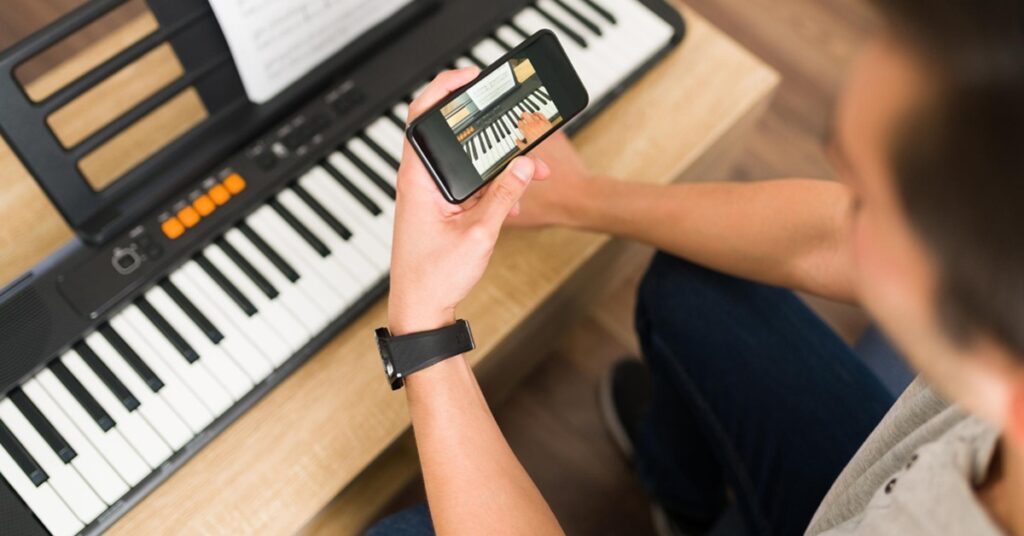What do piano learning apps offer?
Piano learning apps offer a balanced mix of music theory and practice, from lessons on reading sheet music to exercises on basic scales and chords. Each platform typically organizes content into progressive modules, allowing beginners to learn the essential fundamentals while intermediate and advanced players find specific challenges.
One of the great advantages is the possibility of personalizing the pace of study. Unlike face-to-face classes, where you follow a fixed routine, apps allow you to review lessons and redo exercises as many times as necessary. This ensures that learning is consolidated and helps students progress more confidently.
The range of available music is usually quite extensive, including pop, rock, jazz, classical and even soundtracks from movies and series. This way, each user can practice what they like the most, keeping their interest and motivation high. Some apps even have gamification, offering scores and challenges to make the process more fun.
Finally, many of these apps allow for MIDI connectivity, allowing the system to identify, in real time, whether the user is playing the correct notes. This generates instant feedback on accuracy and rhythm, helping to correct mistakes and improve technique without having to rely solely on one's own ear.
How do piano learning apps work?
First, the apps use interactive features that transform instrument learning into an engaging experience. They feature videos, animations, and sheet music that move in time, allowing students to follow the music intuitively. In some cases, it is possible to adjust the speed to practice more complex passages.
Furthermore, these apps structure the content by levels, guiding the student from the initial chords and scales to more complex pieces. The practice tools are varied: repetition of difficult sections, built-in metronome, rhythmic coordination exercises and even fingering suggestions to facilitate execution.
Another highlight is the ability to receive analysis of the notes played, especially when connecting a keyboard via a MIDI-to-USB cable or using the device's microphone to capture sounds from an acoustic piano. This way, the application can indicate where there were errors in pitch or timing, allowing the user to correct them quickly.
Finally, many services offer free plans with basic content and ads, but also offer premium subscriptions with unlimited access to music, advanced lessons, and extra features such as interactive sheet music, reading exercises, and lessons with specialized teachers. It is up to the student to choose which option best suits their needs and goals.
Do these apps completely replace a teacher?
They help a lot, but guidance from a teacher can be essential to correct posture, touch technique and other details that an app alone may not capture.
Do I need to have a high-quality digital piano or keyboard?
Not necessarily. Some apps even work well with acoustic pianos, capturing the sound through the microphone. However, having a digital keyboard with MIDI connection increases the accuracy of the feedback.
Is there content for children and adults in the same app?
Generally, yes. Most apps have fun teaching modes for children, as well as more serious and complex modules for adults or teenagers looking for more in-depth knowledge.
Can I learn music theory through these apps?
Many offer basic theory lessons, such as reading sheet music and forming chords. For more in-depth study, it is recommended to supplement with specific books or courses.

